Houseplants bring life and beauty into our homes, but for enthusiasts and collectors, the thrill often lies in discovering the rarest and most unique plants. Whether you’re looking to elevate your indoor garden or simply find that one plant to impress fellow plant lovers, this list of 10 rare houseplants will take your collection to the next level.
From striking foliage to unusual growth patterns, these plants stand out for their beauty, rarity, and charm. Some of them require special care, while others are surprisingly easy to maintain. No matter your experience level, there’s something exciting about owning a plant that few others have.
If you’re on the hunt for the Best Rare Houseplants, this guide will introduce you to extraordinary options that will make your indoor jungle truly one of a kind. Read on to explore these fascinating plants, their unique characteristics, and how to care for them to keep them thriving!
1. Monstera Obliqua
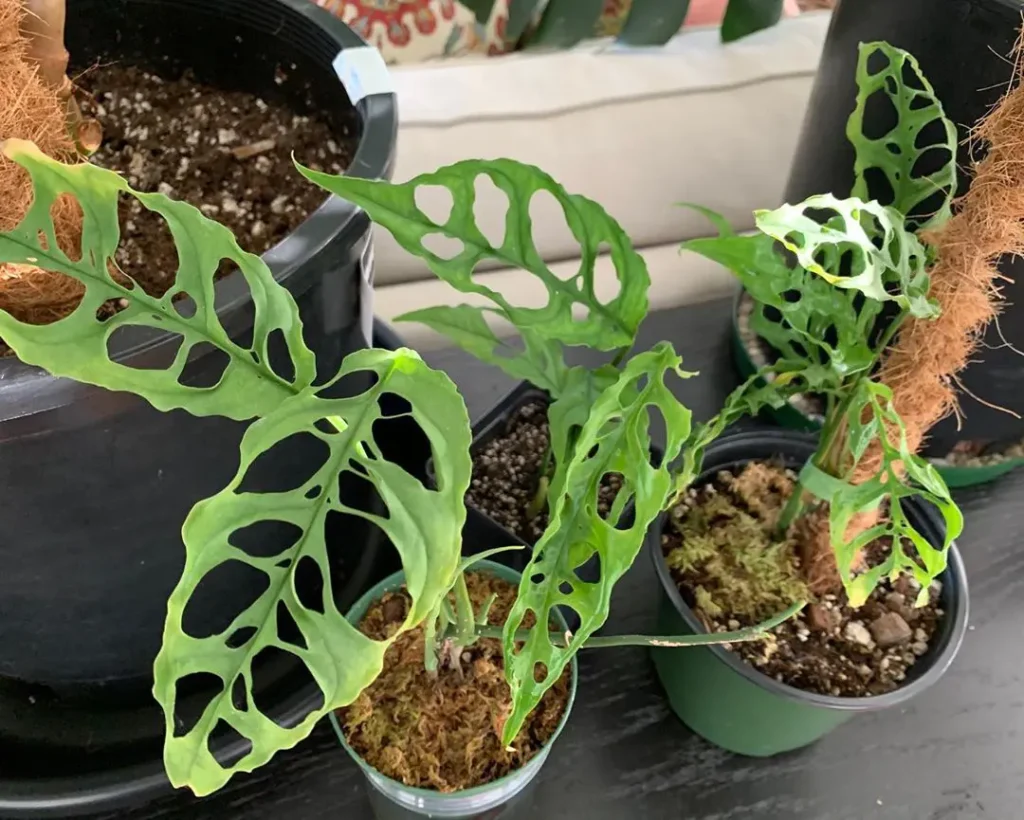
Often referred to as the “unicorn of houseplants,” the Monstera Obliqua is famed for its delicate foliage with a high ratio of holes to leaf area. This elusive plant originates from Central and South America and is notably challenging to find in the houseplant market.
Unlike its more common relative, Monstera Adansonii, the Obliqua has paper-thin leaves that make it highly delicate and sought after by serious collectors. Its fragile nature, slow growth, and high humidity demands make it a true test for patient, experienced plant parents.
If you’re looking for one of the Best Rare Houseplants to elevate your collection, the Monstera Obliqua is a top contender. However, due to its rarity and care requirements, it’s best suited for plant lovers willing to invest time and effort into maintaining optimal conditions.
Care: Provide it with high humidity (80% or more), indirect bright light, and a well-draining aroid mix rich in orchid bark, perlite, and sphagnum moss. Keep the soil slightly moist but not soggy, and ensure good airflow to prevent fungal issues. A terrarium or greenhouse cabinet can help maintain consistent humidity and temperature levels for this rare beauty.
2. Philodendron Gloriosum
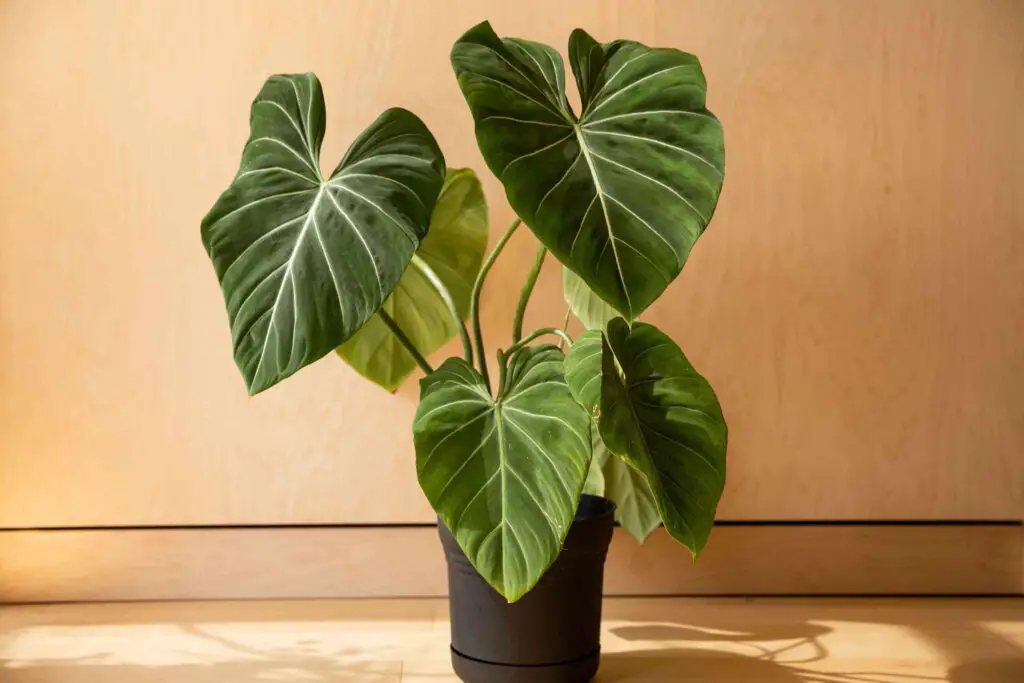
With large, velvety leaves and striking white veins, the Philodendron Gloriosum is both majestic and understated. Unlike climbing Philodendrons, this species is a terrestrial crawler, meaning it grows horizontally along the soil rather than vining upwards.
Native to the rainforests of Colombia, this slow-growing beauty develops massive, heart-shaped leaves over time, making it a prized addition for collectors. If you’re searching for one of the Best Rare Houseplants to elevate your indoor garden, the Philodendron Gloriosum is a must-have.
Its elegant foliage and unique growth habit make it a conversation piece, but patience is required, as it grows at a measured pace. With the right conditions, it will reward you with stunning, oversized leaves that get even more impressive with age.
Care: Place it in bright but indirect light to encourage healthy growth. Use a well-draining soil mix rich in organic matter, such as a blend of peat, orchid bark, and perlite, to maintain aeration and prevent root rot. Keep the soil consistently moist but never soggy, as Philodendron Gloriosum is sensitive to overwatering.
High humidity (above 60%) will help promote lush growth, and a shallow, wide pot allows its creeping rhizome to spread comfortably.
Related Topics:
3. Hoya Carnosa ‘Compacta’ Variegata (Hindu Rope Plant Variegated)
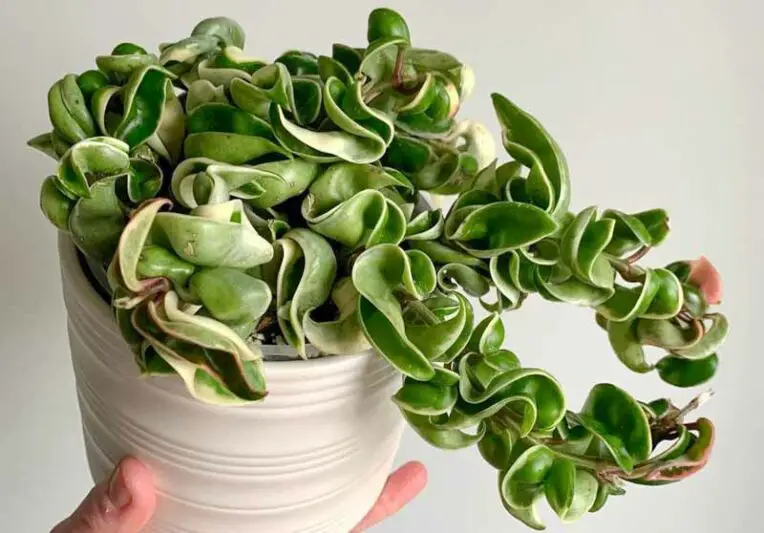
Perfect for trailing plant lovers, the variegated Hindu Rope Plant stands out with its curled, waxy leaves splashed with creamy white, yellow, or even pinkish hues. This rare and eye-catching member of the Hoya family is slow-growing but incredibly rewarding, especially when it produces clusters of fragrant, star-shaped flowers.
Due to its compact, twisted foliage and striking variegation, it’s a favorite among collectors looking for a unique addition to their indoor garden. For those seeking one of the Best Rare Houseplants that combines beauty with low-maintenance care, the Hoya Carnosa ‘Compacta’ Variegata is an excellent choice.
Not only does it add a touch of elegance to any space, but it also thrives with minimal attention, making it ideal for both beginners and seasoned plant enthusiasts.
Care: This plant thrives in medium to bright indirect sunlight, though some direct morning sun can enhance its variegation. It prefers well-draining soil, such as a mix of orchid bark, perlite, and cactus soil, to prevent root rot. Allow the soil to dry out slightly between waterings, as its thick, succulent-like leaves store moisture.
Overwatering is the most common mistake, so ensure the pot has proper drainage. Higher humidity can encourage flowering, but it’s not essential for healthy growth.
4. Anthurium Warocqueanum (Queen Anthurium)
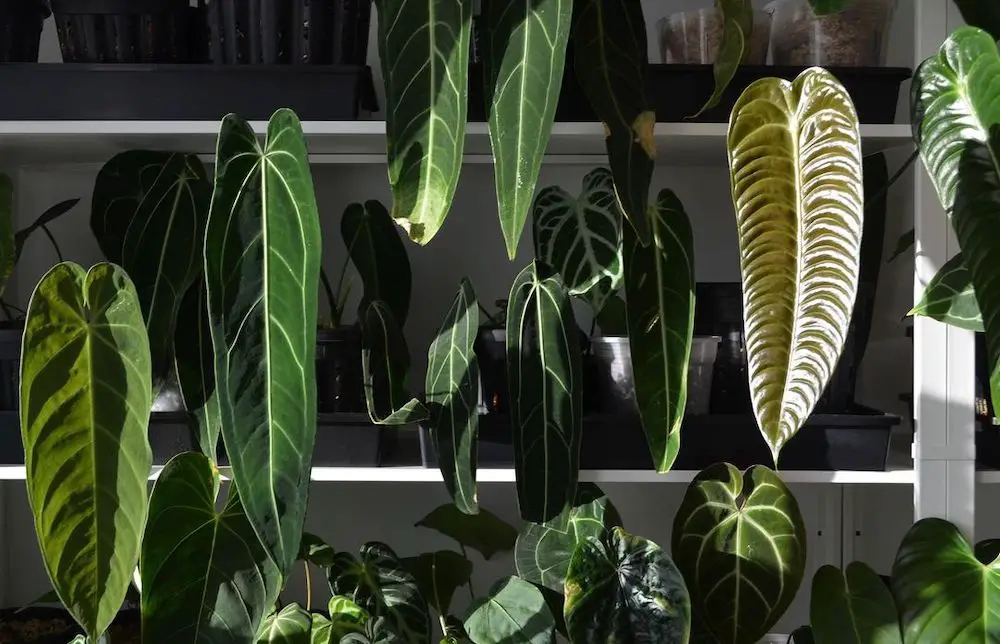
Known as the “queen of the aroids,” Anthurium Warocqueanum boasts long, velvety leaves that exude luxury and elegance. Native to Colombia, this stunning plant is revered for its elongated foliage, which can reach several feet in length under optimal conditions.
The deep green, almost shimmering leaves make it a showstopper in any rare plant collection. However, it is not for the faint of heart—its high humidity and precise care needs make it one of the more challenging houseplants to maintain.
If you’re searching for one of the Best Rare Houseplants to elevate your indoor jungle, the Queen Anthurium is a true statement piece. While it demands patience and the right environment, dedicated plant enthusiasts will be rewarded with its breathtakingly large, velvet-textured leaves that grow more impressive over time.
Care: This plant thrives in high humidity (around 70–80%) and bright, indirect light. A well-aerated soil mix—such as a combination of orchid bark, sphagnum moss, perlite, and charcoal—helps maintain moisture without suffocating the roots.
Misting can help maintain humidity levels, but using a humidifier or placing the plant in a greenhouse setup is more effective for consistent moisture. Water when the top inch of soil feels dry, and ensure proper drainage to prevent root rot.
Anthurium Warocqueanum appreciates good airflow, so avoid stagnant conditions that can lead to fungal issues.
5. Alocasia ‘Dragon Scale’
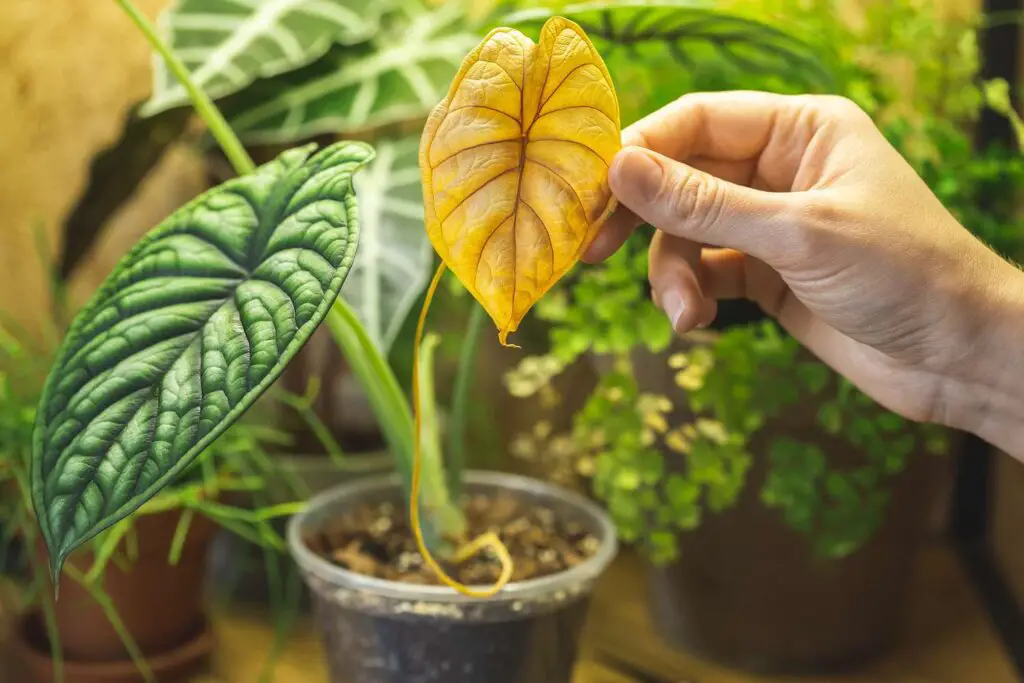
The name says it all—Alocasia ‘Dragon Scale’ is a truly mythical-looking plant with intricate, scale-like patterns on its leaves that resemble a dragon’s skin. The thick, textured foliage has an almost metallic green sheen, making it one of the most visually striking members of the Alocasia family.
Native to Southeast Asia, this rare gem is highly coveted for its bold appearance and compact growth habit, making it perfect for collectors looking to add a touch of fantasy to their indoor jungle. For plant enthusiasts searching for one of the Best Rare Houseplants, Alocasia ‘Dragon Scale’ is a must-have.
While it requires a bit of extra care, its mesmerizing foliage and dramatic presence make it a rewarding addition to any rare plant collection.
Care: This Alocasia thrives in moderate to bright indirect sunlight but should be kept away from harsh direct rays that could scorch its leaves. It prefers consistently moist (but not soggy) soil, so using a well-draining mix with peat, perlite, and orchid bark is ideal.
High humidity (above 60%) helps maintain its stunning foliage, and ensuring good airflow around the plant can prevent mold and pest issues like spider mites. Allow the top inch of soil to dry slightly between waterings to avoid root rot, and consider using a humidity tray or humidifier for optimal growth.
6. Variegated Monstera Deliciosa
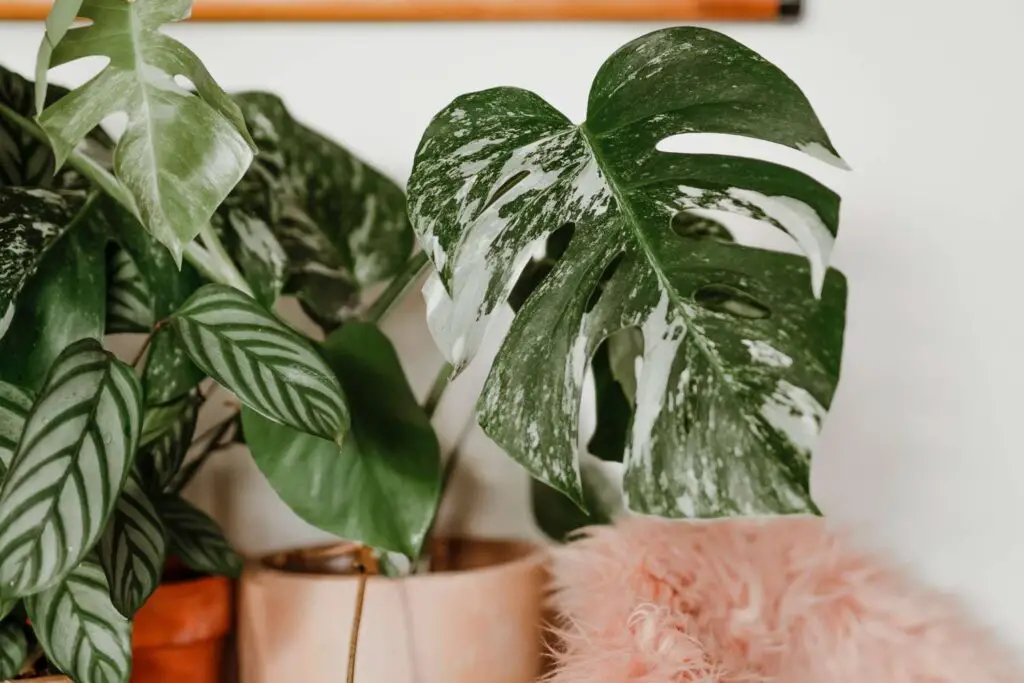
Easily one of the most well-known “rare” plants, the Variegated Monstera Deliciosa is a must-have for collectors. Its stunning leaves are artistically splashed with white, cream, or even yellow, making each one unique. This highly sought-after plant comes in different variegation patterns, including Thai Constellation, Albo, and Aurea, each with its own distinct beauty.
Due to its rarity and slow propagation, the Variegated Monstera is a prized possession among plant enthusiasts. If you’re looking for one of the Best Rare Houseplants that makes a bold statement, this Monstera is a perfect choice. With the right care, it can grow into a breathtaking centerpiece, bringing a tropical, artistic vibe to any space.
Care: Place in bright, indirect light to maintain its variegation, as lower light levels may cause the white portions to revert. Water when the top third of the soil is dry, ensuring a well-draining mix with peat, perlite, and orchid bark to prevent root rot.
Providing a moss pole or trellis will support its natural climbing habit and encourage larger leaf development. Since the white portions of the leaves lack chlorophyll, this plant benefits from occasional fertilization to promote healthy growth. Keep humidity above 60% for best results.
7. String of Pearls ‘Variegated’
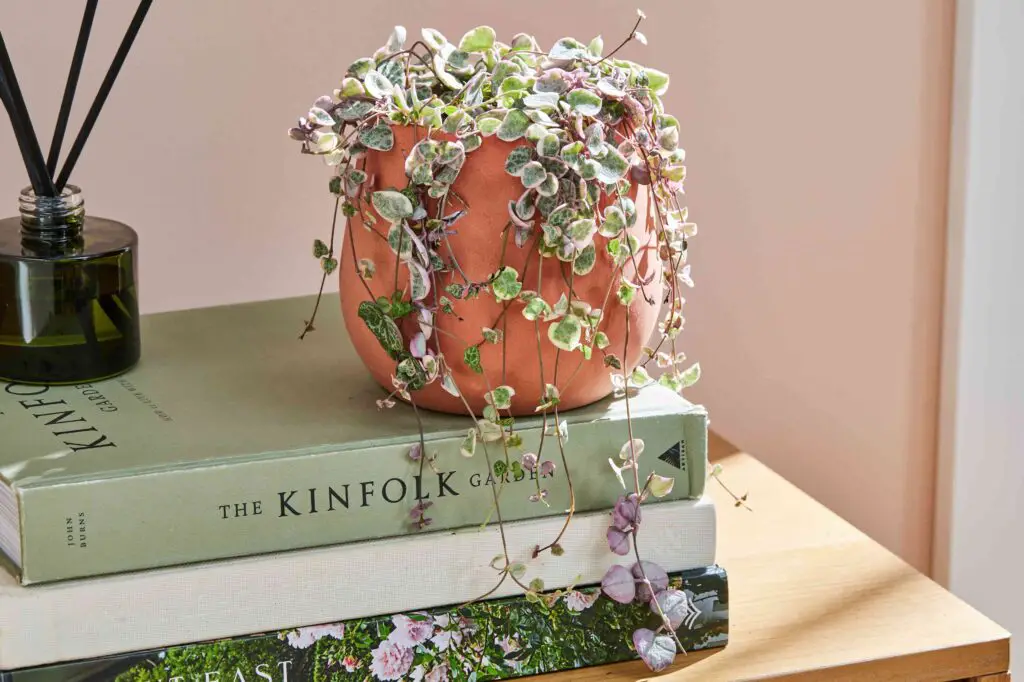
The classic String of Pearls is already a favorite for its cascading strands of bead-like leaves, but the Variegated String of Pearls takes it to another level with marbled white, cream, and green hues. This rare and delicate succulent is a true gem for hanging planters, adding a touch of elegance with its trailing vines.
The variegation not only makes it visually striking but also slightly more challenging to care for, as the lighter portions of the leaves have less chlorophyll and need more light to thrive.For collectors searching for one of the Best Rare Houseplants, this unique succulent is a must-have.
With the right conditions, it will reward you with rapid growth and even tiny, cinnamon-scented white flowers during its blooming season.
Care: Requires bright, indirect light and can tolerate some direct morning sun to enhance its variegation. Use a well-draining cactus or succulent mix to prevent water retention, as it is highly prone to root rot. Water sparingly, allowing the soil to dry out completely between waterings.
Overwatering is the most common issue, so always err on the side of underwatering. Providing good airflow around the plant can also help prevent moisture-related issues.
8. Begonia Pavonina (Peacock Begonia)
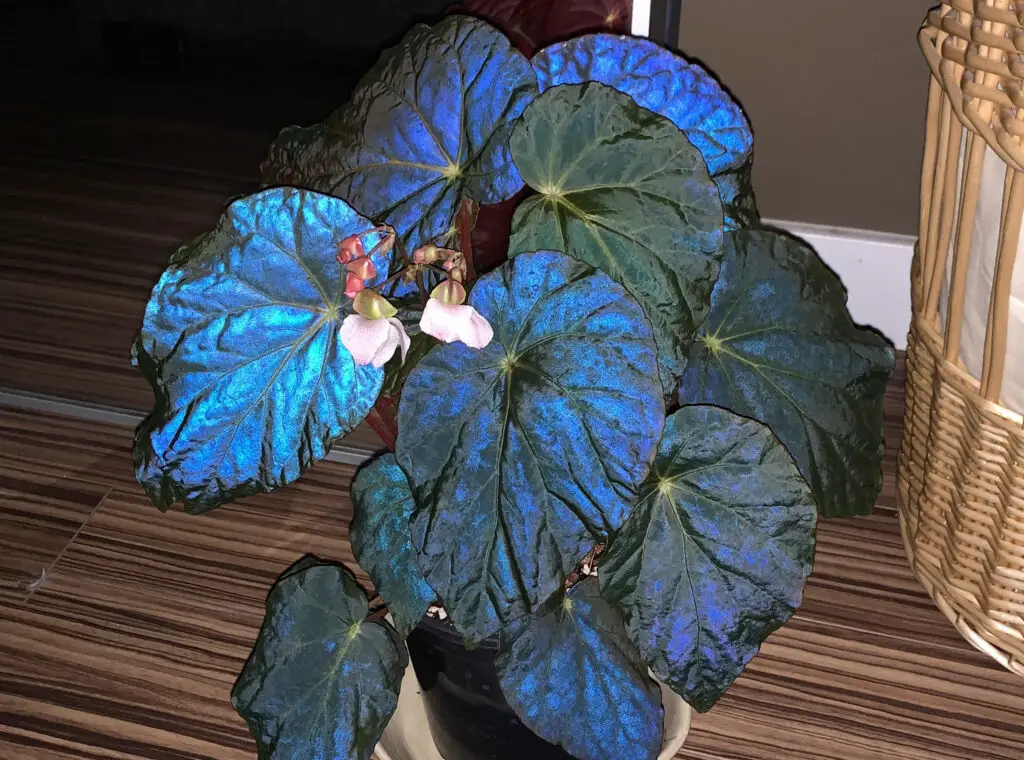
True to its name, the Peacock Begonia flaunts an iridescent blue sheen that becomes more pronounced under low light. Native to the high-altitude forests of Malaysia, this rare beauty exhibits a fascinating adaptation—its shimmering leaves reflect blue light, helping it absorb more energy in its dim natural habitat.
The result is a mesmerizing, color-shifting effect that makes it one of the most magical houseplants you can own. For collectors seeking one of the Best Rare Houseplants, Begonia Pavonina is a true showpiece.
Its ethereal glow and unique coloration make it a conversation starter, but its care requirements mean it’s best suited for those who can provide high humidity and stable conditions.
Care: Prefers high humidity (above 70%), filtered light, and loose, well-draining soil. A mix of peat, perlite, and orchid bark works well to retain moisture while preventing root rot. Water consistently to maintain soil moisture, but avoid waterlogging.
Since this plant thrives in humid, tropical conditions, placing it in a terrarium or greenhouse setup will help it flourish. Avoid exposing it to direct sun, as this can scorch its delicate leaves.
9. Rhaphidophora Tetrasperma (Mini Monstera Variegata)
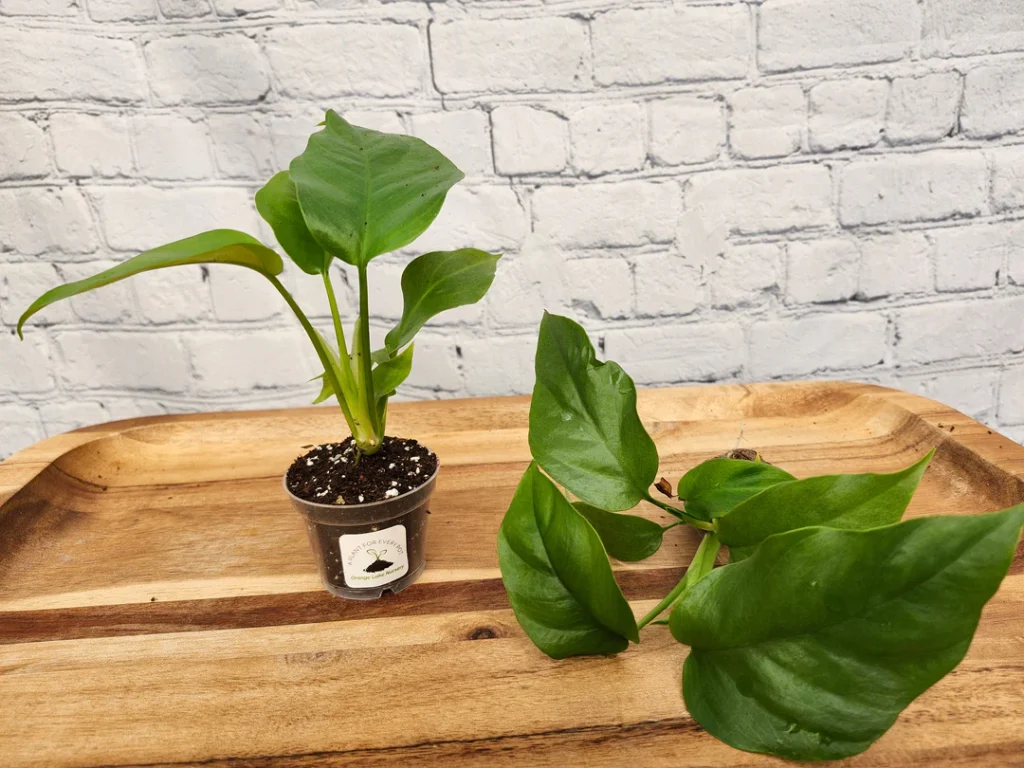
Often called the Mini Monstera, Rhaphidophora Tetrasperma is a fast-growing vining plant with fenestrated leaves that resemble a miniature version of Monstera Deliciosa. The variegated form is even rarer, featuring striking white or cream streaks that add a bold contrast to its foliage.
Unlike true Monsteras, this plant belongs to the Rhaphidophora genus and has a more compact growth habit, making it perfect for smaller indoor spaces. For plant enthusiasts looking for one of the Best Rare Houseplants, the Variegated Rhaphidophora Tetrasperma is a must-have.
It climbs readily with support, producing larger, more dramatic leaves over time while maintaining a manageable size for indoor displays.
Care: Thrives in bright, indirect light, as sufficient light is essential for maintaining variegation. Use a well-aerated soil mix with orchid bark, perlite, and peat to ensure good drainage. Keep the soil evenly moist but avoid waterlogging.
Increasing humidity levels (around 60% or more) will help prevent crispy leaf edges—use a humidifier or mist occasionally. Providing a moss pole or trellis will encourage the plant to climb and produce larger, more mature leaves.
10. Dischidia Ovata (Watermelon Dischidia)
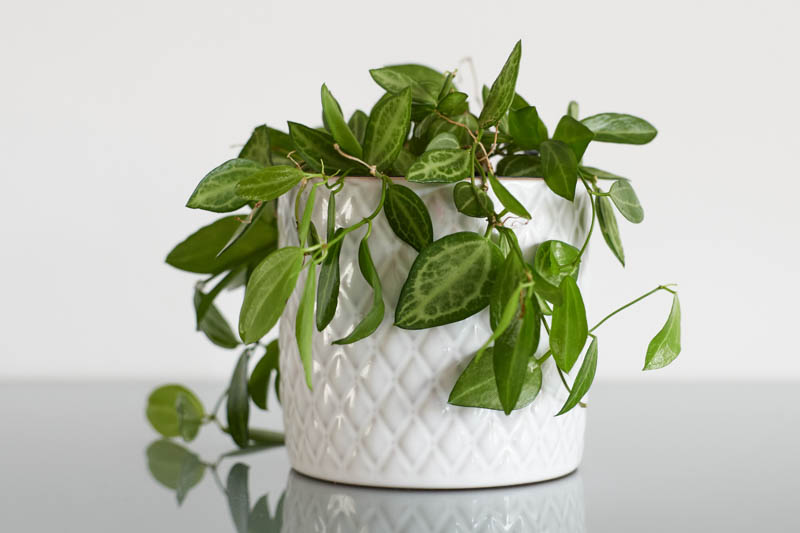
With its adorable, watermelon-patterned leaves, Dischidia Ovata is a unique and eye-catching trailing plant. Native to the tropical forests of Southeast Asia, this vining epiphyte thrives by clinging to trees in its natural habitat. Its oval-shaped leaves, adorned with light green veins resembling watermelon rinds, make it a true conversation starter.
Whether cascading from a hanging basket or trained along a trellis, this plant adds charm and texture to any rare plant collection. For collectors searching for one of the Best Rare Houseplants, the Watermelon Dischidia is an excellent choice.
It’s an easy-going, low-maintenance plant that thrives in the right humidity conditions, making it perfect for plant lovers who appreciate trailing greenery with a unique look.
Care: Prefers bright, filtered light but can tolerate some lower light conditions. Since it’s an epiphyte, it does well in a loose, well-draining mix, such as orchid bark combined with sphagnum moss. Allow the soil to dry out slightly between waterings, as overwatering can cause root rot.
High humidity (above 60%) helps it thrive, making it a great candidate for a terrarium or greenhouse setup. Occasional misting can also help maintain moisture levels.
Adding rare and unique houseplants to your collection not only enhances your indoor space but also brings the joy of caring for extraordinary species. Whether you’re drawn to the mesmerizing iridescence of the Peacock Begonia, the striking variegation of the Monstera Deliciosa, or the intricate foliage of Alocasia ‘Dragon Scale,’ each plant on this list offers something special.
While some require extra care and attention, the reward of nurturing these botanical treasures is well worth the effort. If you’re looking to elevate your plant collection, consider investing in some of the Best Rare Houseplants to create a one-of-a-kind indoor jungle. With the right care, these rare gems will thrive and become the ultimate showstoppers in your home.
Their unique textures, colors, and growth habits make them truly special additions that will impress guests and fellow plant lovers alike. Expand your collection, experiment with new species, and enjoy the endless beauty that rare houseplants bring. Happy growing!
FAQs:
1. What makes a houseplant “rare”?
A houseplant is considered rare if it is difficult to find in nurseries, has unique foliage or growth patterns, or requires specific conditions to thrive. Many of the Best Rare Houseplants, such as the Monstera Obliqua and Anthurium Warocqueanum, are highly sought after due to their stunning appearance and limited availability.
2. How do I care for rare houseplants with high humidity needs?
Many rare houseplants, like the Peacock Begonia and Queen Anthurium, thrive in humidity levels above 60–80%. To maintain optimal humidity, use a humidifier, place your plant near a pebble tray filled with water, or keep it in a greenhouse setup. Consistently monitoring moisture levels ensures these plants stay healthy.
3. Where can I buy the Best Rare Houseplants?
You can find rare houseplants through specialty plant nurseries, online plant shops, and plant trading groups. Some collectors also import rare species from international sellers, but it’s important to check local regulations on plant imports to avoid issues with customs.

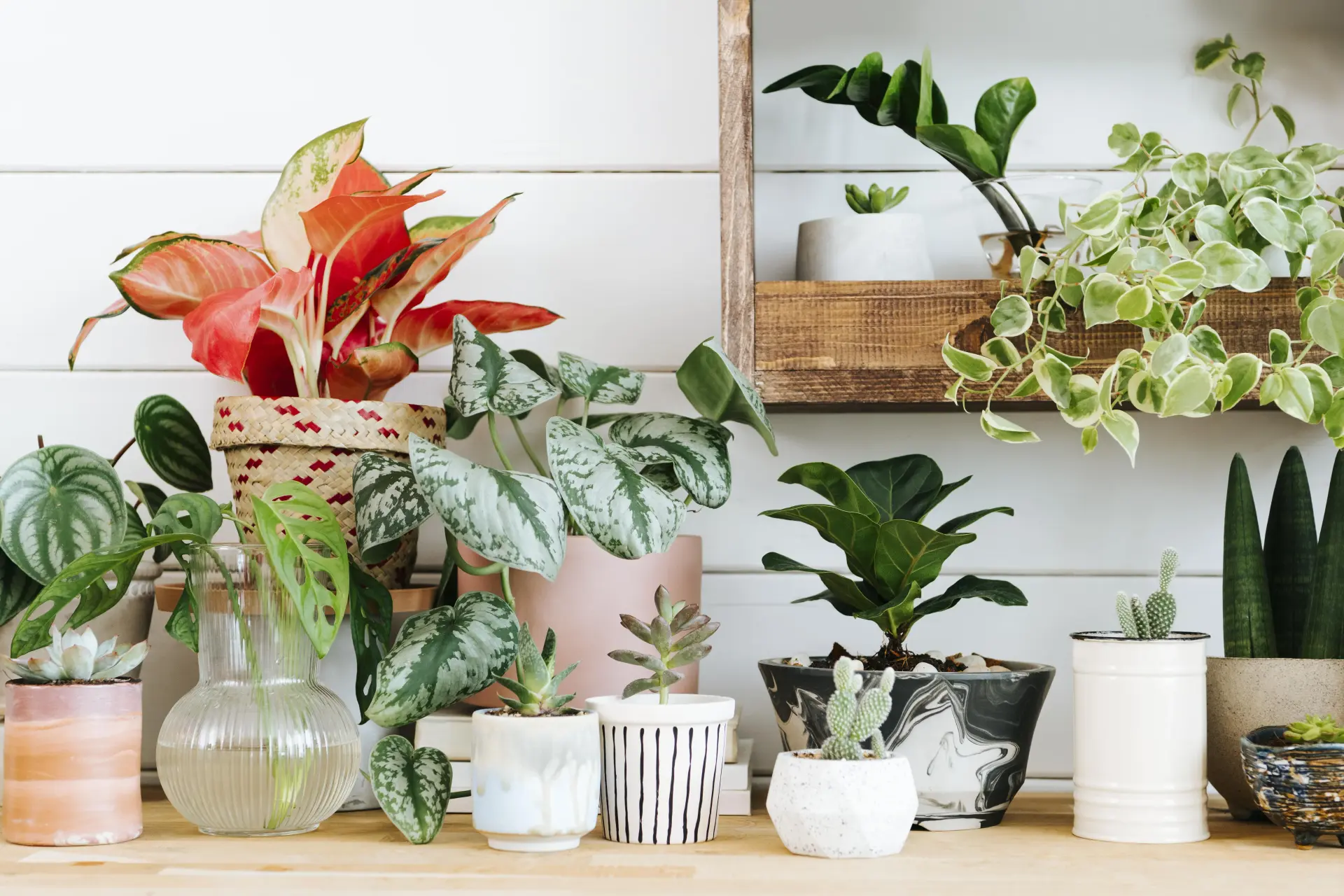
2 thoughts on “10 Rare Houseplants: Best to Add to Your Collection!”